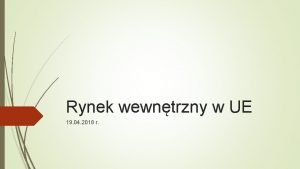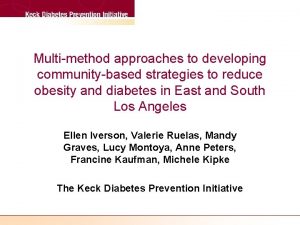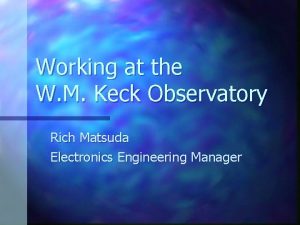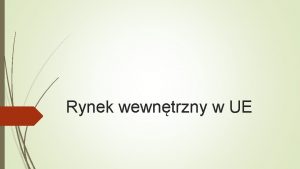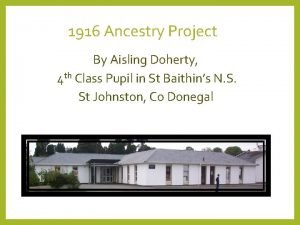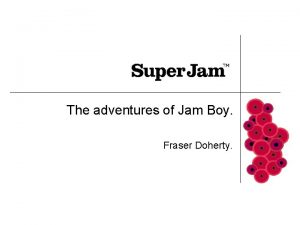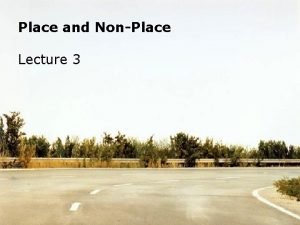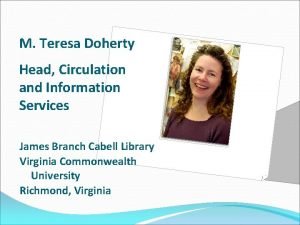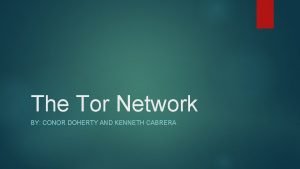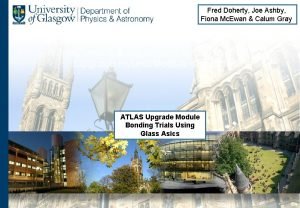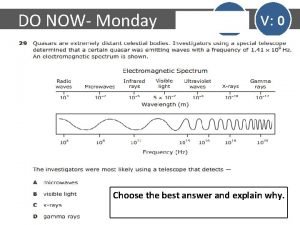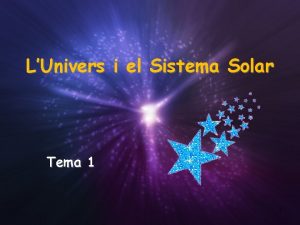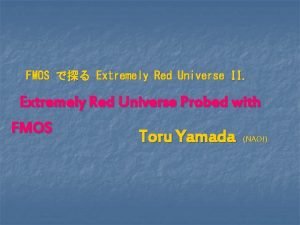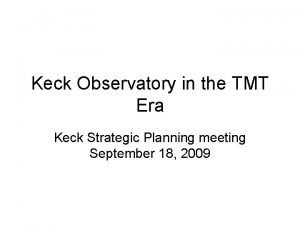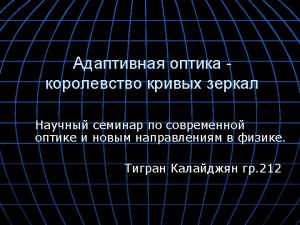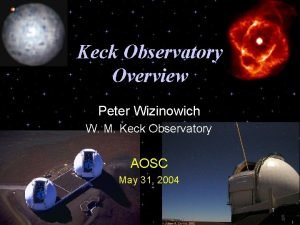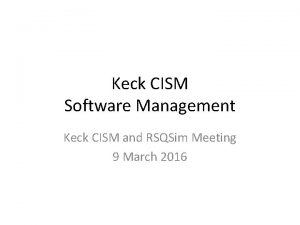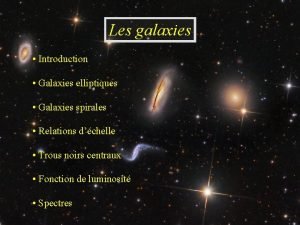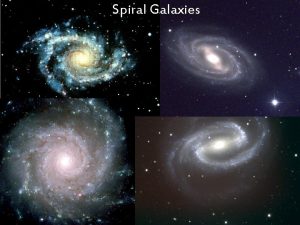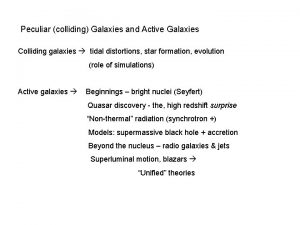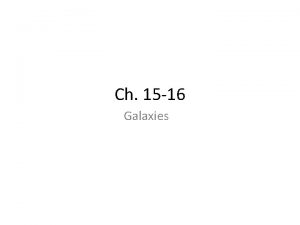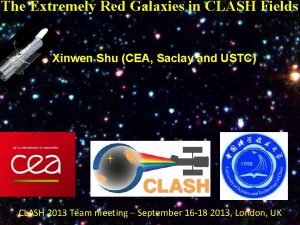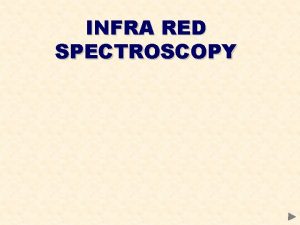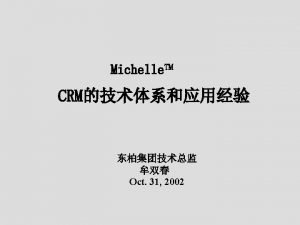Keck Spectroscopy of Extremely Red Galaxies Michelle Doherty
















- Slides: 16

Keck Spectroscopy of Extremely Red Galaxies Michelle Doherty, Institute of Astronomy, Cambridge, UK Andy Bunker, University of Exeter, UK Richard Ellis, Caltech Pat Mc. Carthy, OCIW

INTRODUCTION deep Keck spectroscopy of large sample of EROs in the LCIR survey n Selection criteria: I-H>3, H<20. 5 n Individual and composite spectra – what type of objects are we seeing? n Split in spectral types, composite spectra and redshift distribution n

SAMPLE SELECTION Las Campanas Infrared Survey (LCIR) – designed to identify evolved galaxies at z≥ 1 n I-H>3 selection versus canonical R-K>5 n Mc. Carthy et al. (2001), Firth et al. (2002) predicted selection of evolved massive galaxies n 3 fields – each 170 arcmin 2 n Range in no. densities: 0. 4 arcmin-2 in CDFS, 0. 7 arcmin-2 in SSA 22 and 0. 8 arcmin-2 in NTT n

OBSERVATIONS LRIS – Low Resolution Imaging spectrograph => Dispersion 1. 24Å/pix DEIMOS – Deep Imaging Multi-Object Spectrograph => Dispersion 0. 32Å/pix Obs by Ellis, Firth, Bunker – Oct 2001 and Jan 2003 unbiased selection for a subset Wavelength range ~7000 -9000Å

SPECTRA n n Extracted over 1. 3", sky residuals masked GDDS (Abraham et al. 2004) Templates


WHAT ARE THEY? Identify 44/73 redshifts => what have we missed? Too faint or too far Large field-field variation in split of spectral types: Field E+A mixed Stars CDFS Late type Early type 0% 44. 5% 11% NTT 5% 20% 50% 5% SSA 22 40% 26. 5% 7% 26. 5% 0% Whole Sample 16% 28% 11% 4%

WHAT ARE THEY? Large fraction E+A – 30% of absorption line systems BUT =>This ranges from 0 -50% across 3 fields n At 0. 3<z<1. 0 Tran et al. 2004 find 9% ==> EVOLUTION? ? n

COMPOSITE SPECTRA




REDSHIFT DISTRIBUTION n n Completeness Redshift spikes in some fields Late type uniform but other distributions affected by spikes Overdensity in CDFS

A Cluster in CDFS? z=1. 22 5 galaxies over ~5 Mpc Velocity dispersion ~400 km s-1 add in FORS 2 z’s – Vanzella et al. (2004) + Vanzella et al. ◊ Doherty et al. => Gravitationally Speculation! bound cluster? Morphology/density relation at high-z

CONCLUSIONS Cosmic variance a huge effect – large field variations in number densities and spectral types See redshift spikes => old ellipticals tracing the overdensities ~75% of our sample shows signs of old stellar population (only 28% with pure early-type spectra, i. e. E/S 0) ~70% exhibit signs of ongoing or recent star formation

FUTURE WORK 2 fields with HST imaging => morphological analysis SED fits => break age-metallicity degeneracy using metallicities from spectral lines Will be able to model ages, metallicity and morphology and hence determine nature of these objects in more detail (in particular those showing a mix of spectral features). Velocity dispersion from G-band => masses
 Formuła keck
Formuła keck Usc keck cafeteria menu
Usc keck cafeteria menu William myron keck
William myron keck Ausstehender kaufwiderruf.
Ausstehender kaufwiderruf. David keck attorney
David keck attorney Aisling doherty
Aisling doherty Michael doherty maynooth
Michael doherty maynooth Fraser doherty jam
Fraser doherty jam Willie doherty photographer
Willie doherty photographer Teresa doherty darts
Teresa doherty darts Fraser doherty superjam
Fraser doherty superjam Conor doherty model
Conor doherty model Fred doherty
Fred doherty Brainpop galaxies quiz answers
Brainpop galaxies quiz answers Waves are produced by stars and galaxies.
Waves are produced by stars and galaxies. Tipus de galaxies
Tipus de galaxies Most galaxies in the inner region of a large cluster are
Most galaxies in the inner region of a large cluster are
